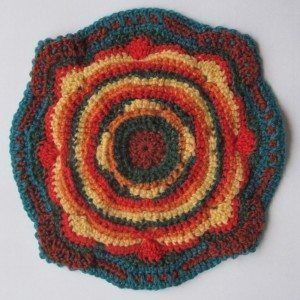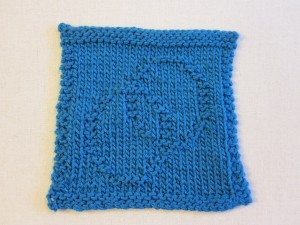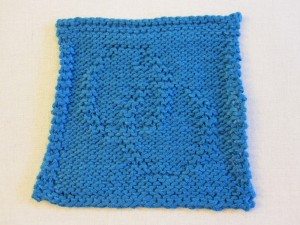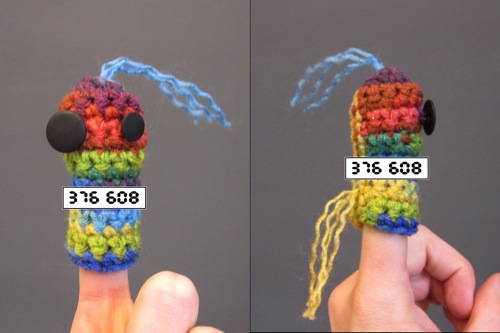I made the CAROcreations overlay crochet project I mentioned in a recent First Friday post.
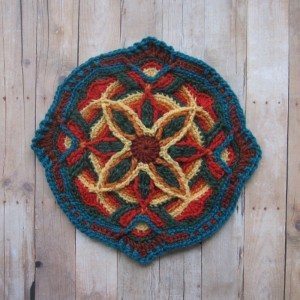
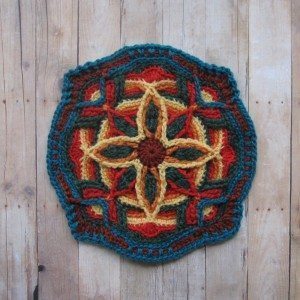
It’s on weathered wood because it reminds me of a hex sign on a barn.
I used Herrschner’s 2-ply afghan yarn, a sport weight acrylic, and just picked colors I liked. Looking at the two color variations shown on the pattern, I assigned the new colors to old ones and wrote them in throughout the pattern.
I don’t think I can say enough good things about the pattern. I did have to rip and start again a few times, especially early on, but that was all me. If any of the directions seem ambiguous, there is a picture you can compare with, clear enough to count the stitches and verify your interpretation. At first I was worried things were askew, but I couldn’t fix them. As it turned out, they were fixed by subsequent rounds.
There was one thing I had to translate. Carola uses “behind” to mean “stitched after” (for the right-hander, “to the left of”). It’s a valid use of the word but opposite of my natural interpretation. There are also a couple of uncommon stitches that aren’t given in the pattern, but they are easily figured out from the ones that are.
There’s something almost luscious about overlay crochet. Tall stitches made into the unused front loop of earlier round stitches are extended by tall post stitches in a later round of the same color, the whole melding into one long braid of yarn. Begin with an increase of tall stitches, continue with tall post stitches on each, and conclude with a post stitch decrease and the whole is like some kind of esoteric weaving.
Here are pictures of the unblocked piece.
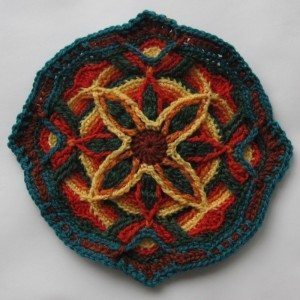
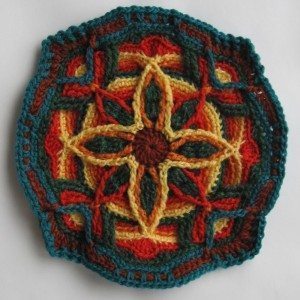
A few words of advice: Use strong light. Weave as you go – I stitched around the beginning tail at the start of every round, and since you needle join the end it’s already threaded and you may as well finish the job. If you don’t, there will be a depressingly huge number of ends to finish after the crocheting is done. However, once you’re done, even the back is lovely!
